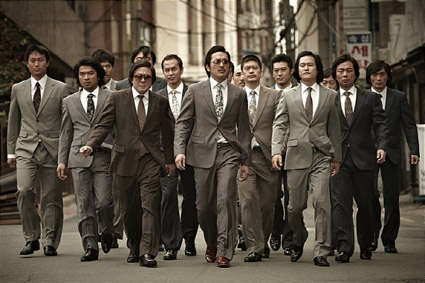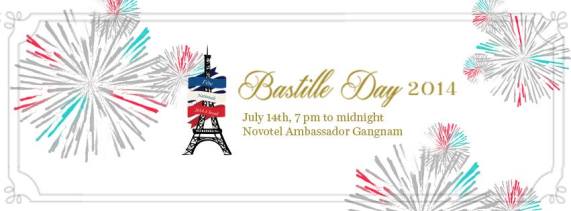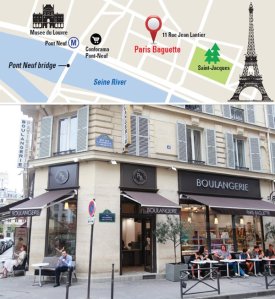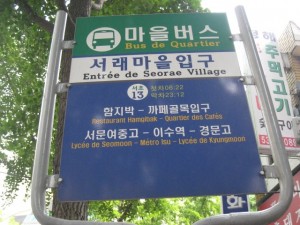They say France is the 3rd largest Korean diaspora community, however, I wasn’t too impressed with what I found from the net. I thought there’d at least be a small Korean town or a street that’s dedicated to the population (if you know one, please, let me know!), but I have yet to discover one.
What I DO know is at this moment, there are over 58 restaurants in Korea that is dedicated to French cuisine. See the list and websites below if you want to take a stab at French cuisine in Korea. Gangnam has over 20 restaurants alone.
The first contact of Franco-Korean relations
Similar to Sweden, the first French person who successfully made contact with Korea (and possibly ate kimchi) was a guy named Father Philippe Maubant in 1836. Keep in mind the Joseon Dynasty was ruling during this period and several factors lead to a rather bloody mess. Not too bloody but still enough bloody.
Observing how China’s relationship with Western influence brought about much turmoil including the Second Opium War and Taiping Rebellion, Heungseon Daewongun decided to ultimately get rid of all the converts. This time was know as the French campaign against Korea in 1866 also called the Byeong-in yangyo (Western disturbance of the byeong-in year).
Many executions were done right at this very spot in Jeoldu-san on the banks of the Han River (picture below).
Nevertheless, an official Treaty of Friendship was signed in 1886 and the first Korean to step foot in France (at least recorded) was Hong Jong-u in 1890. But don’t picture this guy quietly sitting down to translate materials all the live long day (okay, maybe picture it a little); according to his bio, he was also an assassin, a reformer, an activist, and statesman. All around OG.Before assassins and gangsters looked like this,
 They looked like this.
They looked like this.
Shortly after the signing, due to Japanese rule and World War II from 1906-1949, relations with France and Korea became almost nonexistent. However, after the Korean war, relations between the two countries picked up fairly quickly.
As of 2002, over 6-7000 French citizens were in Korea. And in 2011, there were at least 12,864 roaming the streets of France – women seen more than men – though a thriving community is yet to be seen.
Notable Kyopo
Fleur Pellerin is a Minister of France. She represents France of course, but is also a Korean adoptee. France encourages ethnic diversity and when she became a Minister, there was no big reaction on her heritage to the citizens. In saying this, she considers herself a representative for her capabilities and not a representation of ethnic background.
On a side note about adoption, this reference said it best. “Adoption is something disturbing to them, at the same time, Korean people are really proud of adoptees who succeed. And Korean people are really proud of the fact that Fleur Pellerin is in the French government. In their point of view, Korean adoptees are first Korean. So it’s quite paradoxical.” Site of reference.
Keeping the French Connection Alive
What is available to us is the French Korean Chamber of Commerce (FKCCI) which keeps us updated on all Franco-Korean relations and events since 1986. The most recent event occurred in Korea Bastille Day and every year there is a Gala event which encourages further business activities between the two countries with high profile celebs including Lee Hyo-Ri, Lee Hye-Yeong, Um Jung-hwa, Lie Sang-Bong, Daniel Henney, etc. It’s definitely an upscale ritzy type of an event occurring every year in December.
All of these activities have really amounted to some serious cash-flow between the two countries – 6.36 billion Euros worth – in 2010. source. It seems that a majority of the events are aimed in improving business relations between the countries so if you have a business in either France of Korea, this is a great organization to keep up with.
You can see what kind of ventures they are currently taking on the French Korean Chamber of Commerce site here. Take a look at their Coree Affaires blog, which in correlation with the FKCCI.
There is the Centre Culturel Coreen as another useful source for all things French.
Paris Baguette. Let’s just take a moment.
Now I know what you’re thinking, where does Paris Baguette fit in all of this and why are we even talking about it ?
People take their bread seriously in France, with over 10 billion baguettes being sold annually. The infamous Paris Baguette, which is owned by South Korean Young-in Hur and ubiquitously known among Koreans has opened in no other place than Paris itself.
Ice has been sold to the eskimos on this one. And the only ‘authentic’ Paris Baguette store on 11 Rue Jean Lantier will taste different from the ones found in Seoul and across the globe as all bread-makers (boulangers) stick to set standards according to the Chambre Professionnelle des Artisans Boulangers-Patissiers. The bread will taste like how it should taste like minus the corn, ketchup, and sweet gooeyness. Personally, I’ve been to many Paris Baguettes during my years in Seoul and enjoyed the sweet twist on breads, but I’d like to try the one in France if I ever get the chance.
Community Integration
In Seoul, there is a tiny community called the Montmatre, aka Seorae Village where you can find a small community of French people living, roughly about 600. Once you start to walk around this area, you will notice the kids speaking French, a French High School and nearby a Park known as Montmontre Park, cafes, shops, etc. Here’s the low down. If you just want the basic things to do, what to eat, how to get there, check Seoul Selection’s recommendation here.
And of course, if that doesn’t satiate your fever for France, Petite France and Nami Island are located at Gapyeong County in Gyeonggi Province, 90 minutes away from Seoul by train. They are about 25 minutes away from each other but most people do both in one day.
More on Nami Island and Petite France.
Food and Wine
As mentioned in the beginning, if you’re looking for some good food to quench your appetite, check out some of the places which are recommended and have gotten fairly good reviews.
Seoul:
Pierre Gagnaire
La Celtique (In English and Korean)
Le Saint-Ex
Un Deux Trois
Le Comptoir
Chungu:
White Christmas
If you’re in Cary, NY, there’s a French-Korean fusion restaurant called komokomonc. Not sure if it’ll ever make its’ way to France, but it’s a start!
Because the French enjoy their food and wine, if you fancy a wine your bibimbap, the FKCCI recommends a Joseph Perrier Chardonnay or a Chateau Bonnet Sauvignon Blanc. You can purchase the full guide on their page.
Closing Thoughts
I was literally scrapping the bottom of the barrel with this article as I try to focus more on the community and how Koreans have settled in France. As you can tell, there isn’t much to go by and now I’m more curious than ever.
Have you ever lived in France ? Write a comment and let us know below !


![By Matthew smith 254 [CC-BY-SA-3.0]](http://koreandiaspora.files.wordpress.com/2014/09/jeoldusan.jpg?w=404&h=305)




Recent comments